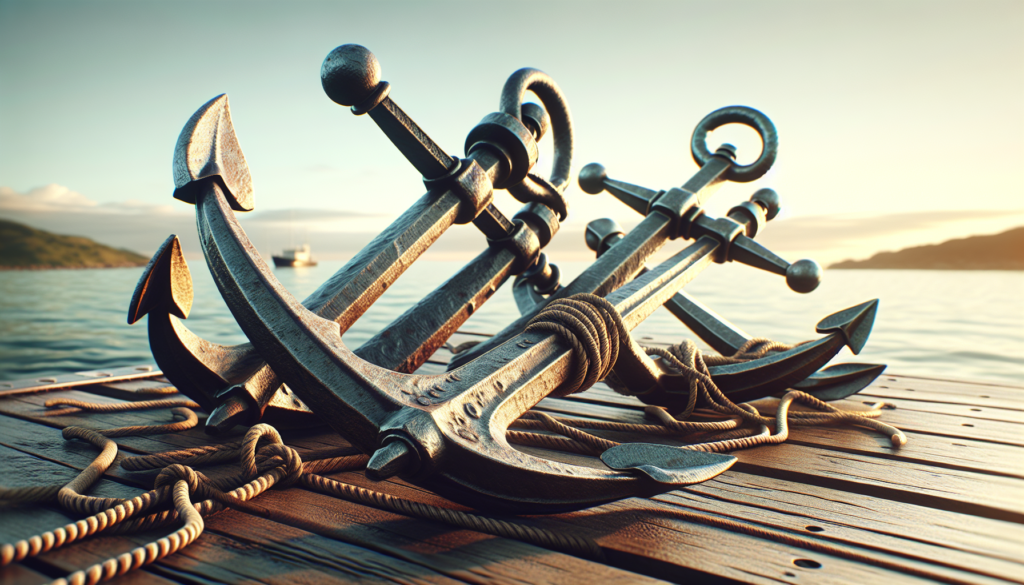The Ultimate Guide to Boat Anchors
When it comes to boating, one essential piece of equipment that often gets overlooked is the boat anchor. While it may seem like a simple tool, the boat anchor plays a crucial role in keeping your vessel steady and secure, whether you’re fishing, swimming, or enjoying a peaceful day out on the water. In this comprehensive guide, we will delve deep into the world of boat anchors, exploring their history, types, uses, and much more. So, let’s dive in and uncover the fascinating world of boat anchors!
The History of Boat Anchors
Boat anchors have been used for thousands of years, dating back to ancient civilizations such as the Egyptians and Greeks. The earliest anchors were simply large stones or bags filled with sand that were thrown overboard to keep a boat from drifting. Over time, anchors evolved into more sophisticated designs, such as the iconic fluke anchor and the plow anchor. Today, anchors come in a variety of shapes and sizes, each suited for different types of water conditions and boat sizes.
Types of Boat Anchors
There are several types of boat anchors available on the market, each designed for specific purposes. The most common types include:
1. Fluke Anchor
The fluke anchor, also known as the Danforth anchor, is one of the most popular types of anchors due to its lightweight design and ability to hold well in sandy or muddy bottoms. It features two sharp flukes that dig into the seabed, providing excellent holding power.
2. Plow Anchor
The plow anchor, also called the CQR anchor, is a reliable choice for boats of all sizes and is well-suited for rocky or weedy bottoms. Its plow-like shape allows it to dig deep into the seabed, providing a secure hold even in rough conditions.
3. Claw Anchor
The claw anchor, also known as the Bruce anchor, is a popular choice for smaller boats and is ideal for use in rocky or coral-filled areas. Its claw-like design allows it to anchor securely in a variety of bottom types.
4. Mushroom Anchor
The mushroom anchor is a simple, compact anchor that is well-suited for calm waters and can be easily stowed on board. It features a rounded top and a weighted base that allows it to sink into the seabed and hold the boat in place.
Choosing the Right Boat Anchor
When selecting a boat anchor, it’s essential to consider factors such as the size and weight of your boat, the type of seabed you’ll be anchoring in, and the prevailing weather conditions. Additionally, it’s crucial to choose an anchor that is compatible with your boat’s anchor system, whether it be a windlass or a manual system. Consulting with a marine expert or referring to anchor sizing charts can help you determine the right anchor size and type for your vessel.
Anchor Handling and Maintenance
Proper anchor handling and maintenance are essential for ensuring the safety and efficiency of your anchoring system. Before dropping anchor, it’s important to survey the anchorage area for potential hazards such as rocks, reefs, or other boats. When lowering the anchor, be sure to pay out enough rode (anchor line) to provide adequate scope for holding power. Regularly inspecting the anchor for signs of wear or damage and cleaning it thoroughly after each use can help prolong its lifespan and ensure reliable performance.
Expert Opinions
We reached out to Captain John, a seasoned boater with over 20 years of experience, for his insights on boat anchors. According to Captain John, “Choosing the right anchor for your boat is crucial for safe anchoring. It’s important to consider factors such as anchor type, size, and holding power to ensure a secure hold in all conditions.” His expert advice underscores the significance of selecting the appropriate anchor for your vessel.
Common Misconceptions
One common misconception about boat anchors is that bigger is always better. While it may seem logical to opt for a larger anchor for increased holding power, an oversized anchor can be cumbersome to handle and may not fit your boat’s anchor system. It’s essential to choose an anchor that is proportionate to your boat size and weight for optimal performance.
Conclusion
To wrap things up, boat anchors are an indispensable tool for boaters of all experience levels. By understanding the different types of anchors, selecting the right anchor for your boat, and practicing proper anchor handling and maintenance, you can ensure a safe and enjoyable boating experience. Whether you’re cruising on calm waters or braving rough seas, a reliable boat anchor is your key to staying secure and steady on the water. So, next time you set sail, don’t forget to drop anchor and enjoy the tranquility of the open sea!



